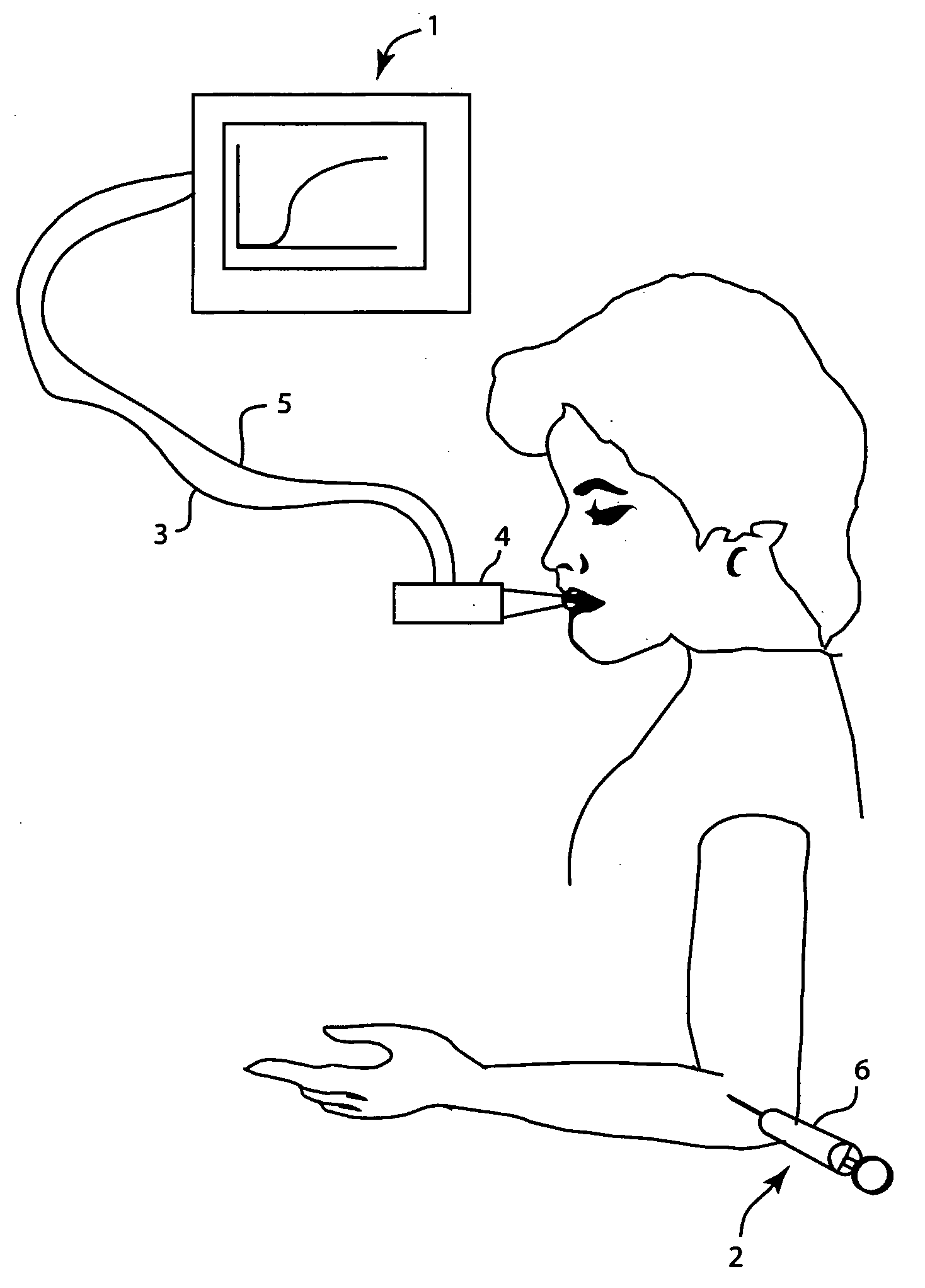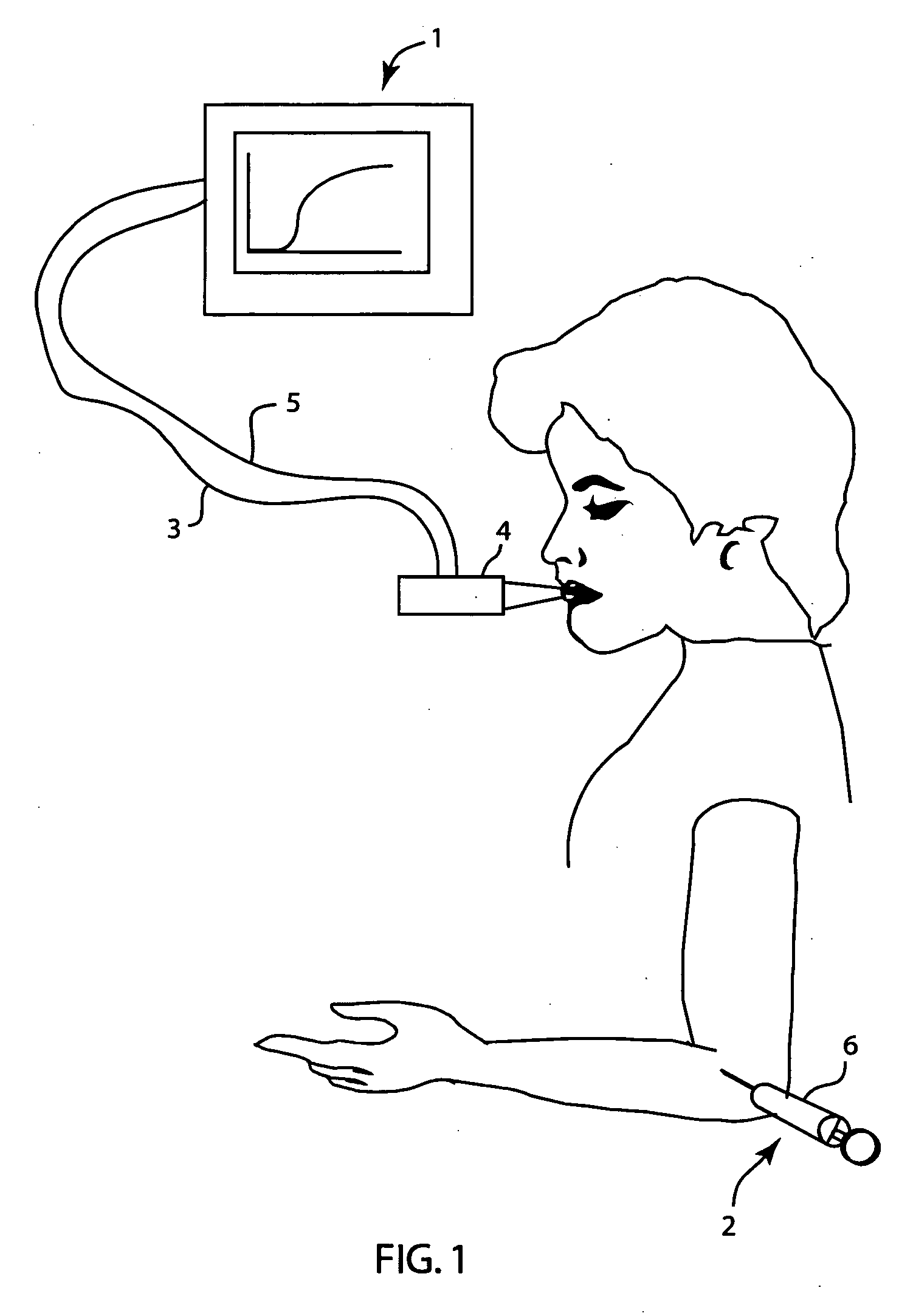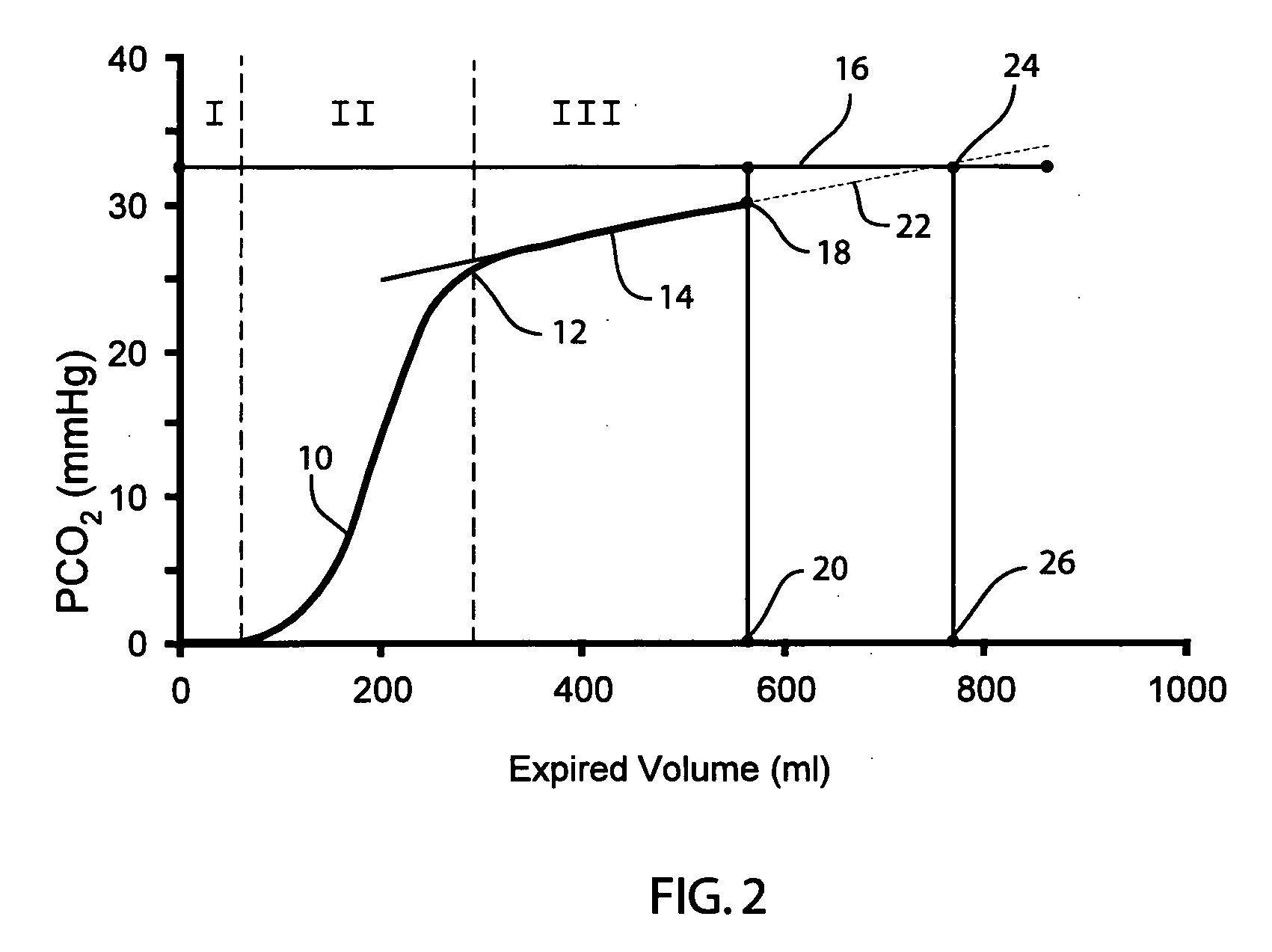Method and apparatus for indicating the absence of a pulmonary embolism in a patient
a technology for pulmonary embolism and pulmonary embolism, which is applied in the field of methods and apparatus for indicating the absence of pulmonary embolism in patients, can solve the problems of increasing the cost of diagnosing pe, poor specificity to confirm, and imaging these pe patients, so as to reduce the number of patients, the difference in pco2 between the two types of blood perfusion is small, and the effect of effective diagnosis
- Summary
- Abstract
- Description
- Claims
- Application Information
AI Technical Summary
Benefits of technology
Problems solved by technology
Method used
Image
Examples
Embodiment Construction
[0025]FIG. 1 shows VCap measurement apparatus 1 and arterial blood sampling apparatus 2. Apparatus 1 includes an expired breathing gas CO2 concentration sensor, which is advantageously an infrared gas analyzer. Such analyzer may be either of a mainstream type, in which the infrared absorption path is directly at the breathing gas pathway, or alternatively of a sidestream type, in which a sample of the breathing gas is withdrawn with a sampling line 3 transporting a sample flow of the breathing gas to the infrared absorption path of the sensor for measurement.
[0026] Breathing gas volume may be measured advantageously with any type of well-known flow sensor 4, based on pressure difference measurement over a known flow restrictor, a thermal sensor, an ultrasound sensor, or other suitable sensor. Flow sensor 4 is coupled to apparatus 1 by conductor 5. The volume is determined by integration of the flow signal with respect to time. If the gas concentration is determined with sidestream ...
PUM
 Login to View More
Login to View More Abstract
Description
Claims
Application Information
 Login to View More
Login to View More - R&D
- Intellectual Property
- Life Sciences
- Materials
- Tech Scout
- Unparalleled Data Quality
- Higher Quality Content
- 60% Fewer Hallucinations
Browse by: Latest US Patents, China's latest patents, Technical Efficacy Thesaurus, Application Domain, Technology Topic, Popular Technical Reports.
© 2025 PatSnap. All rights reserved.Legal|Privacy policy|Modern Slavery Act Transparency Statement|Sitemap|About US| Contact US: help@patsnap.com



